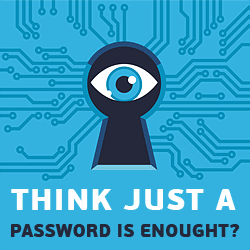Recent Posts From All Categories
Protectimus vs. Okta MFA: A Comprehensive Comparison
When seeking a multi-factor authentication solution, it can be quite...
The Architecture of Protectimus On-Premise MFA Platform
Among the available MFA deployment options, on-premise solutions have...
Multi-Factor Authentication for LDAP
LDAP helps organizations manage access to critical systems, but passwords...
Popular Posts All Time
How to Backup Google Authenticator or Transfer It to a New Phone
Our regular readers know that we strongly recommend applying two-step verification wherever it’s possible. In the contemporary world, where database leaks are a standing affair, two-step authentication is not an option, it is, in fact, a must. If you use two-factor verification, an intruder would need to get both the unique password you came up with, and the gadget, which produces the verification codes, to break into your account. Thus, two-factor authentication protects from brute force, keyloggers, most cases of phishing and social engineering. It also complicates man-in-the-middle and man-in-the-browser attacks. So why two-factor verification is still unpopular? Sure, it creates an extra step to take to log in, but most users omit it not because of this extra time and effort, but because they are afraid of losing access to their credentials if something goes wrong with their authentication devices. “As the world is increasingly interconnected, everyone shares the responsibility of securing cyberspace.”– Newton Lee, Counterterrorism and Cybersecurity: Total Information Awareness From all available options of one-time passwords generation or delivery (SMS, emails, hardware and software tokens) most people choose Google Authenticator or other similar applications like Authy, Protectimus Smart etc. Operating principle is pretty much the same...
Twitter Two-Factor Authentication in Details
With over 145 million active users Twitter is widely used not only for personal entertainment but for business and political agendas too. Yet, surprisingly (or not, considering that they did admit to using phone numbers for targeting ads) Twitter has been reluctant to forgo SMS to deliver one time passwords for their 2 step verification for a very, very long time. Until finally, in November last year, they gave in and allowed for Twitter two-factor authentication without requiring the phone number. In this post we will look into all the 2FA methods Twitter supports, show you how to activate each of them and how to make sure you are able to login even if you lose your 2FA Twitter token. Buy a hardware token for Twitter 2FA How to enable Twitter 2FA via SMS and whether it’s worth it As we’ve already mentioned above — we are decidedly against Twitter 2FA SMS based. As a matter of fact — we vehemently insist that using SMS to deliver verification code for MFA anywhere, not only in Twitter 2FA, is not safe and should be avoided if at all possible. Why are we so against SMS? While it is convenient and...
Mobile Authentication Pros and Cons
The popularity of mobile devices increases every day. Smartphones, tablet computers, smart watches – today these lightweight portable ‘mini-computers’ are sold better than traditional desktops and laptops. This trend is set by the rhythm of modern life, full of flights and journeys – often on the other end of the world. Today, a lot of people don’t work in the traditional offices. They can work remotely in comfortable conditions – either at home or during the journey. A small, lightweight mobile device is convenient to be kept within reach of the hand. In this situation, there is an urgent need in reliable authentication methods to access personal and especially work-related accounts. Thus, the significance of mobile authentication cannot be overestimated. It is worth noting that the mobile authentication can denote two different things: User authentication as the owner of the smartphone or tablet. User authentication in any service that supports two-factor authentication (2FA), using the smartphone as a token – mobile authenticator. Let us consider the second option in more detail as the more versatile and interesting one. Two-factor authentication process generally consists of two stages. At first, you enter a common reusable password assigned to you on a...













Subscribe To Our Newsletter
Join our mailing list to receive the latest news and updates from Protectimus blog.
You have successfully subscribed!